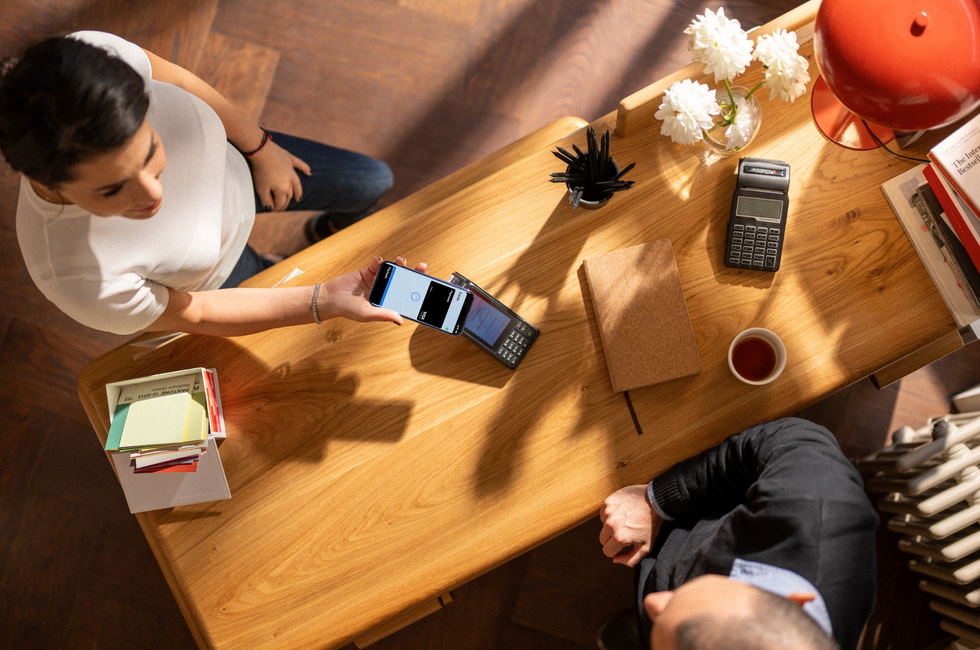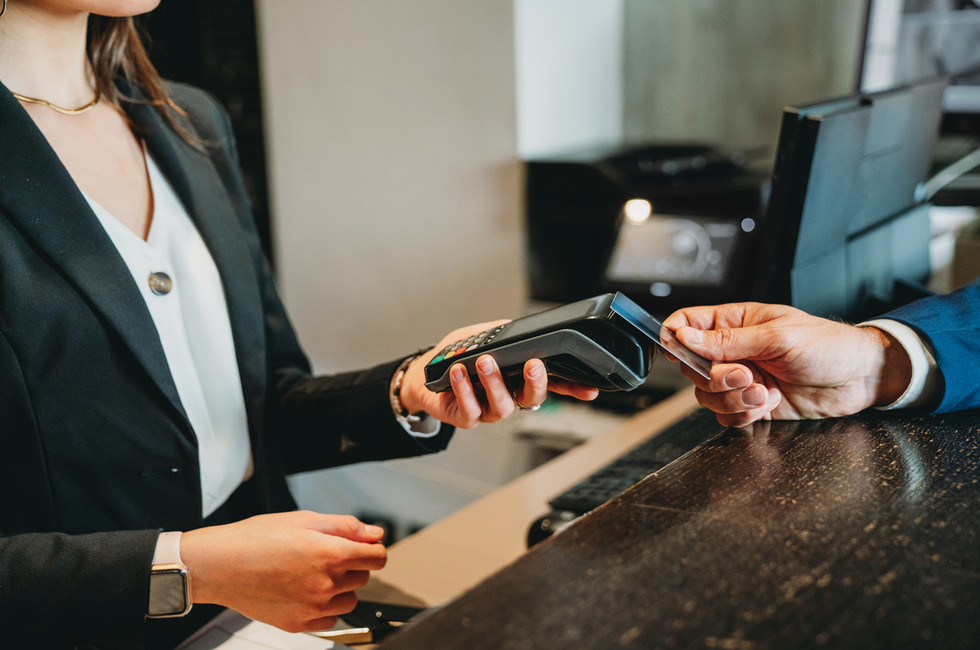
Can your company cards integrate with your digital wallet?



Imagine — or maybe even remember — how your team would make payments pre-company cards. A few years ago, they had to phone through on a landline or get written approval, maybe get something stamped, dig out the cheque book, hang on to an illegible handwritten receipt, and so it goes on.
Now, the cheque books are banished, and corporate cards have helped make work purchases easier than ever for your team. But what about when they forget their card, or even worse if it's been stolen. Here's where smartphones and digital wallets come in. The modern phone is a jack of all trades, allowing your colleagues to pay and transfer money conveniently and safely (as well as all of its other functions).
By submitting this form, you agree to receive emails about our products and services per our Privacy Policy.
Electronic payments
From the simple exchange of products and services to the advent of mintage, paper money, and finally digital payments, one thing is sure — payments have evolved substantially. Despite the considerable changes, the demands mostly remain the same: convenience and safety. So, how do the current trends in payments comply with these needs?
In recent years, the industry has seen a large influx of electronic payment options, which are set to continue growing. By the end of 2021, digital payments in Europe are estimated to reach a transaction value of $260 billion, as per data from Statista. According to the same study, the transaction value for 2025 will almost triple to reach $775 billion.
A massive amount of these transactions occur through digital wallets, and forecasts predict that this trend will become increasingly popular, particularly in European and Asian markets. Denmark and Sweden, for instance, are already on their way to becoming among the first cashless economies in Europe, while Hong Kong and Singapore are leading in Asia.
Choose the right spend management solution with our RFI template
Business digitization and digital wallets
Business digitalization seeks to optimize internal processes through technology and present additional opportunities for increasing value or revenue. The use of digital wallets is just one way that a business can start to transform digitally, providing they have the appropriate financial software to support them.
Digital wallets or e-wallets are applications that allow users to store their personal credit card or company credit card information. They then use a mobile device to pay; instead of paying with a credit or debit card, this makes for a much faster and more secure process than traditional methods, as there's no need to carry around cash.
At a time when everyone is looking to enhance and simplify daily processes, it's no surprise that payment options offering flexibility are increasing in popularity. Users can track their real-time transactions without the need to open their online banking applications.
Payhawk, digital wallets, and your company cards
Payhawk now integrates two of the most popular digital wallet solutions, Google Pay and Apple Pay.
Beyond the convenience of digital wallet integration, Payhawk offers automated, real-time credit card and expense reconciliation. This feature provides real-time transaction notifications, enabling employees to submit expenses promptly without retaining physical receipts. Utilizing OCR technology, expenses are automatically categorized, reducing manual effort and expediting the reconciliation process. Additionally, Payhawk ensures native two-way real-time synchronization with ERP systems, maintaining data consistency across all financial platforms. By combining digital wallet integration with automated expense reconciliation, businesses can achieve a seamless and efficient expense management experience.
What inspired us to add this to our set of features and Enterprise Suite? The same reason that we develop all of our features. We want to help businesses to have seamless payment and expense management experiences. By integrating with digital wallets, we have helped make company cards more reliable for users and ensure a quick and easy payment process.
"Managing cash is expensive, risky, and cumbersome. I think we, as a society, should aim to become cashless on all fronts," Gilles Feith, CEO at LuxAir, а Payhawk customer, said.
The world is going cashless, so it's only natural to build integrations that enhance accountability and make business spend traceable and easy to manage.
Card security and payment convenience
Digital wallets offer added security and convenience, which are both fundamental components to our product offering at Payhawk.
Convenience is essential. We want our users to have synergy between their Payhawk cards and other work software. Digital wallet accessibility is enviable; users simply have to unlock their devices. All Apple devices support Apple Pay, while the Google counterpart is compatible with Android. And both e-wallets enable online payments, which makes e-commerce feel effortless.
Security is a major component too. And it's woven into every feature that Payhawk releases. Neither Google nor Apple Pay stores users' card details on their devices or provider's servers. Instead, Apple Pay uses a device-specific number and a unique transaction code. At the same time, Google creates a temporary code to handle the transaction instead of sharing your payment details directly with the merchant. These methods ensure an extra layer of protection, on top of Payhawk's security, and protect users' money if their device gets stolen or hacked.
With the addition of Google Pay and Apple Pay to our payment options, Payhawk can help your business make both cashless and cardless payments. Download the ebook to learn how and why businesses big and small use virtual and physical company cards to spur business digitization and become cashless.
Maggie has been an integral part of our journey from a modest three-person marketing team to where we are today. A jack of all trades, she navigated through social media, directed various video campaigns, and started our customer marketing function. Outside the office, she embraces the challenge of being a mediocre snowboarder.
Related Articles


Why Legacy Expense Tools Failed to Modernize Finance

